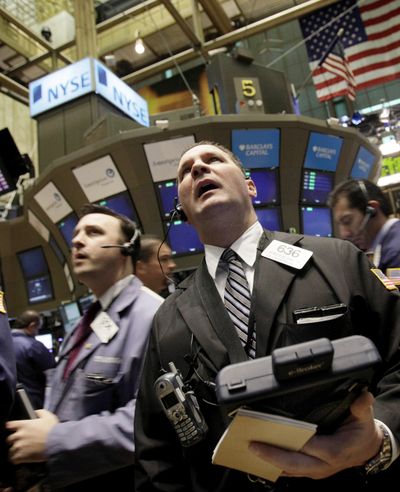Dow flirts with 11,000, but light trading a worry
Share volume is down 25 percent during recent run of stock advances

NEW YORK – Think Dow 11,000 is a big deal? Think again.
The Dow Jones industrial average briefly hit the milestone Friday for the first time in 18 months before closing at 10,997.
But Wall Street analysts who study key stock index levels say all the attention paid to 11,000 is more like a big distraction. They worry that investors are ignoring another number at their peril: the surprisingly low volume of trading. As stocks have risen over the past year, the volume reflects the vulnerability of a rally riding on the shoulders of relatively few participants.
And that’s given pause even to the bulls.
“It worries a lot of us,” said Wellington Shields’ Frank Gretz, a technical analyst who specializes in pinpointing market levels at which stocks might suddenly rise or fall. He wonders whether the volume signals that the rally could soon peter out, like the big surges that preceded steep declines in the 1930s in the U.S. and in Japan more recently.
Louise Yamada, a 29-year veteran of technical analysis who heads an eponymous firm in New York, says she’s not just concerned but confused.
“Why is the market going up?” she asks. “You usually don’t see advances without volume.”
The widely cited Dow index, which tracks stocks of 30 companies, is up 70 percent from its lows of more than a year ago. The climb has been one of the strongest in history, and it may herald a strong recovery. But it’s been propelled by relatively few trades.
The 200-day moving average volume on the New York Stock Exchange is now at 1.2 billion shares, down from 1.6 billion, or nearly 25 percent, a year ago.
In other words, if there is wisdom in crowds, the stock market is getting dumber.
One reason volume is lower: Main Street investors have largely stayed out of the market, abandoning it to hedge funds, pension funds and other professional investors. Last year, individuals, as tracked by mutual fund flows, yanked $14 billion from stock mutual funds.
Bulls argue that the Dow breaching 11,000 might convince ordinary investors that the rally will last. And that will bring a flood of money into the market, pushing indexes higher.
But Janney Montgomery Scott analyst Dan Wantrobski isn’t convinced.
“Main Street investors need confidence in the economy more than the Dow at 11,000,” he said. “They need a drop in the unemployment rate.”
On that front, there are signs of hope.
Last week the Labor Department reported 162,000 jobs were created in March, the most in three years.
Another boost to the outlook came Thursday from retailers: Sales at stores open at least a year rose 9 percent last month.
And, of course, there are plenty of other indicators of stock market health besides volume.
For starters, technical analysts like that most stocks in various indexes have rallied, and not just a few powerful ones, as is sometimes the case. They also note that nearly nine out of 10 stocks are trading above their 200-day average price – a bullish sign.
Then there’s the argument that maybe volume isn’t really all it’s cracked up to be.
In the last bull market, the trend was completely opposite the one today. The 200-day average daily volume surged to 1.7 billion shares in late 2007, up more than a third from early 2002, as individuals grew more confident in the rally.
As it turns out, they should have sat on their cash. In October 2007, shortly after volume peaked, the market began to collapse.